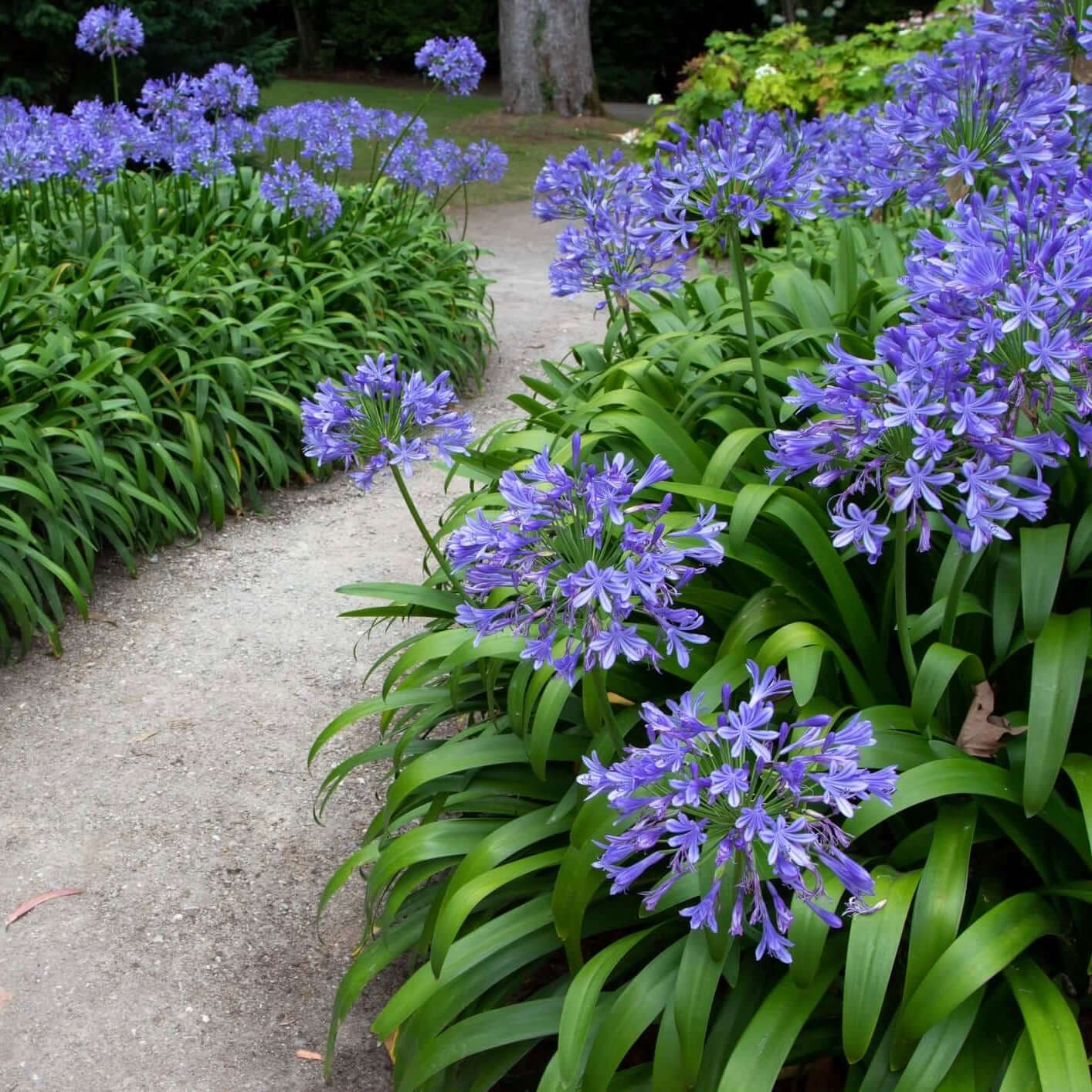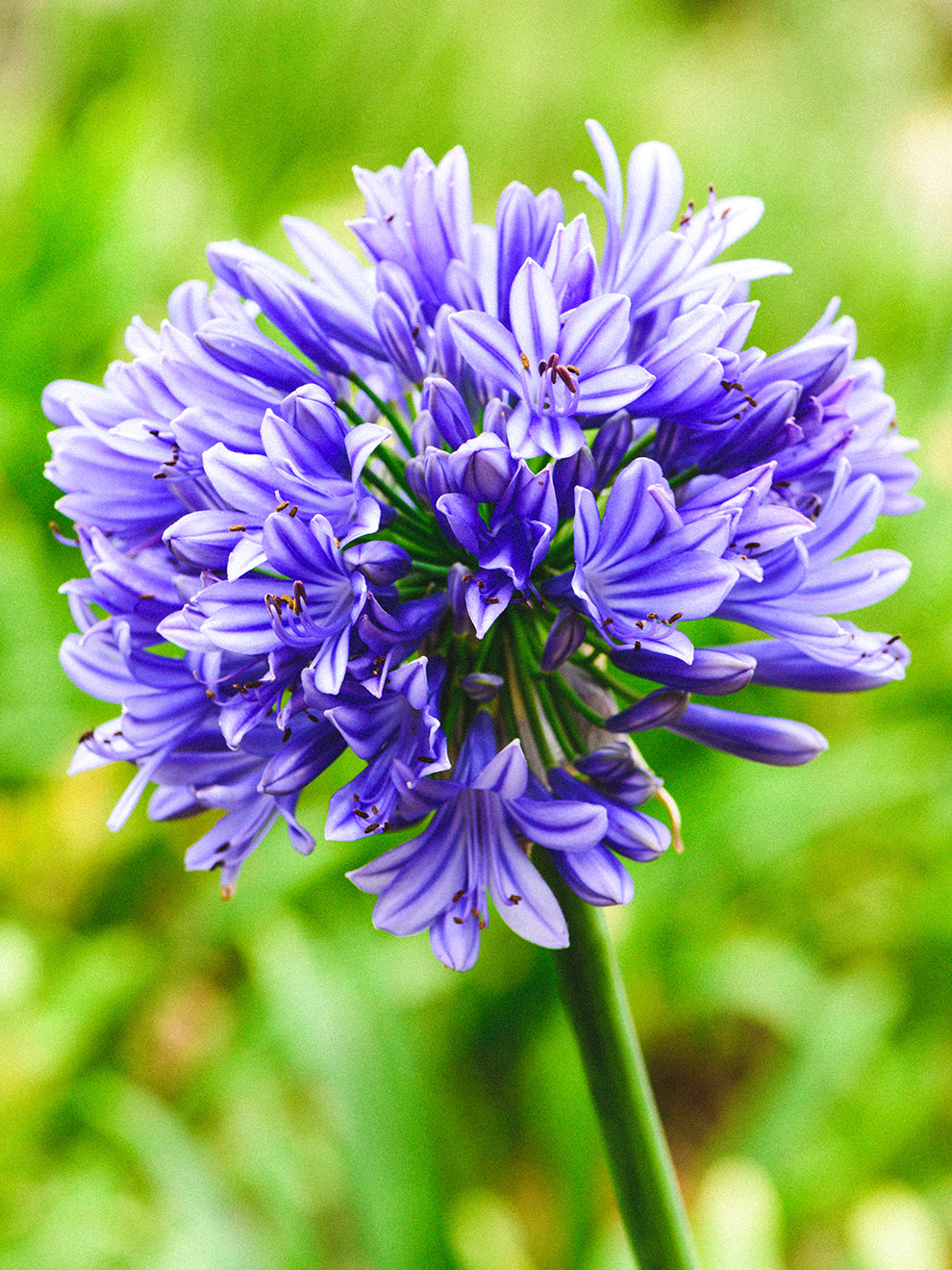Agapanthus Proliferation: Tips for Expanding Your Plant Collection
Agapanthus Proliferation: Tips for Expanding Your Plant Collection
Blog Article
Letting Loose the Secret to Effective Agapanthus Farming: Advice for a Flourishing Garden
In the realm of horticulture, cultivating agapanthus efficiently needs a tactical approach that incorporates different aspects of plant treatment. By understanding the subtleties of agapanthus cultivation, one can develop a setting where these plants flourish and grow generously.
Growing Agapanthus: Finest Practices
When growing Agapanthus, proper dirt preparation is crucial for making certain successful growth and growth of these beautiful blossoms. Agapanthus, typically referred to as Lily of the Nile or African lily, thrives in well-draining dirt with a somewhat acidic to neutral pH degree - Agapanthus. Prior to planting, it is vital to change heavy clay soils with raw material such as compost or peat moss to improve water drainage and offer vital nutrients for the plants
To plant Agapanthus, select a location that gets complete sunlight to partial shade, as this will advertise healthy and balanced development and bountiful flowering. Dig a hole two times the size of the plant's root round and place the Agapanthus at the very same depth it was previously expanding. Delicately backfill the opening with soil, pushing down strongly to remove any air pockets around the origins.
Water the recently planted Agapanthus thoroughly and remain to keep the soil evenly moist, specifically during the plant's active growing season. Agapanthus. Applying a well balanced plant food once a month can further sustain the plant's development and flowering. By complying with these ideal practices for growing Agapanthus, you can develop a spectacular display screen of these captivating flowers in your yard
Suitable Dirt Conditions for Agapanthus
For ideal growth and flowering success of Agapanthus plants, making sure the dirt problems are excellent is important. Agapanthus prospers in well-draining soil with a slightly acidic to neutral pH degree varying from 6.0 to 7.0. This sort of soil allows for ample water drain, avoiding waterlogging which can result in root rot. To boost dirt drainage, consider including natural issue such as garden compost or peat moss when preparing the growing website. In addition, Agapanthus likes soil that is rich in nutrients, so incorporating a balanced fertilizer throughout the expanding period can advertise healthy growth and vivid blossoms.

Watering and Feeding Tips
To guarantee healthy and balanced development and lively blossoms, proper watering and fertilizing techniques are necessary for effective Agapanthus farming. Agapanthus plants benefit from regular watering, particularly throughout the growing season. It is recommended to water deeply once a week, making sure the dirt is damp yet not soaked. During heat or in pots, more frequent watering may be necessary to avoid the soil from drying out entirely.
When it pertains to fertilizing Agapanthus, a balanced plant food with equivalent parts nitrogen, phosphorus, and potassium can be used in the springtime to promote healthy growth and flowering. Slow-release plant foods are perfect for providing nutrients slowly over a prolonged period. Prevent over-fertilizing, as this can result in excessive vegetation development at the cost of blooms.
Additionally, including raw material like garden compost into the dirt can improve nutrient levels and enhance soil framework, helping in the total health of the Agapanthus plants. Web Site By adhering to these watering and fertilizing tips, garden enthusiasts can guarantee their Agapanthus plants flourish and generate spectacular screens of flowers.
Trimming and Deadheading Techniques
Correct trimming and deadheading techniques play a crucial function in preserving the health and aesthetic appeals of Agapanthus plants, enhancing the vital techniques of watering and feeding for successful growing. Pruning Agapanthus includes eliminating Full Article invested flower heads, yellowing or dead leaves, and total shaping of the plant to advertise far better growth. Deadheading, the procedure of removing faded blossoms, not only boosts the plant's appearance yet likewise motivates more blooming.
When deadheading Agapanthus, it is a good idea to trim off the flower stem at the base using sharp, tidy shears. This process reroutes the plant's energy from seed manufacturing back right into root and vegetation development, advertising a healthier and much more robust plant. click reference Routine deadheading can prolong the growing duration of Agapanthus and prevent self-seeding, which can cause congestion.
In regards to pruning, Agapanthus usually gain from a light trim after blooming to clean up the plant and encourage fresh growth. Reducing the invested blossom stems and removing any type of dead or damaged foliage assists preserve the plant's vigor and general appearance. However, it is vital to prevent cutting into the crown of the plant, as this can deteriorate its health and wellness.

Protecting Agapanthus From Pests and Diseases
Implementing efficient pest and illness management approaches is important to safeguarding the health and wellness and vigor of Agapanthus plants in growing. One usual insect that influences Agapanthus is the Agapanthus borer, a caterpillar that tunnels right into the plant, creating damage to the flowers and fallen leaves.
In addition to insects, Agapanthus are prone to diseases such as origin rot and fungal fallen leave places. By remaining vigilant and resolving parasite and condition issues quickly, gardeners can assist their Agapanthus prosper and grow.

Verdict
Finally, successful cultivation of agapanthus calls for appropriate planting methods, optimal soil conditions, adequate watering and fertilizing, normal pruning and deadheading, and defense from diseases and parasites. By complying with these pointers and techniques, garden enthusiasts can guarantee a prospering garden filled up with beautiful agapanthus flowers. Agapanthus. Bear in mind to maintain constant treatment and attention to detail to advertise the wellness and durability of these sensational plants
When planting Agapanthus, proper dirt prep work is essential for making sure successful development and advancement of these attractive flowers.Water the newly planted Agapanthus completely and proceed to keep the dirt evenly damp, especially during the plant's active expanding season.For ideal development and flowering success of Agapanthus plants, guaranteeing the soil conditions are ideal is vital. When planting or transplanting Agapanthus, make certain the dirt is well-prepared to offer the needed foundation for the plants to establish themselves effectively. One usual pest that influences Agapanthus is the Agapanthus borer, a caterpillar that passages right into the plant, creating damage to the fallen leaves and flowers.
Report this page